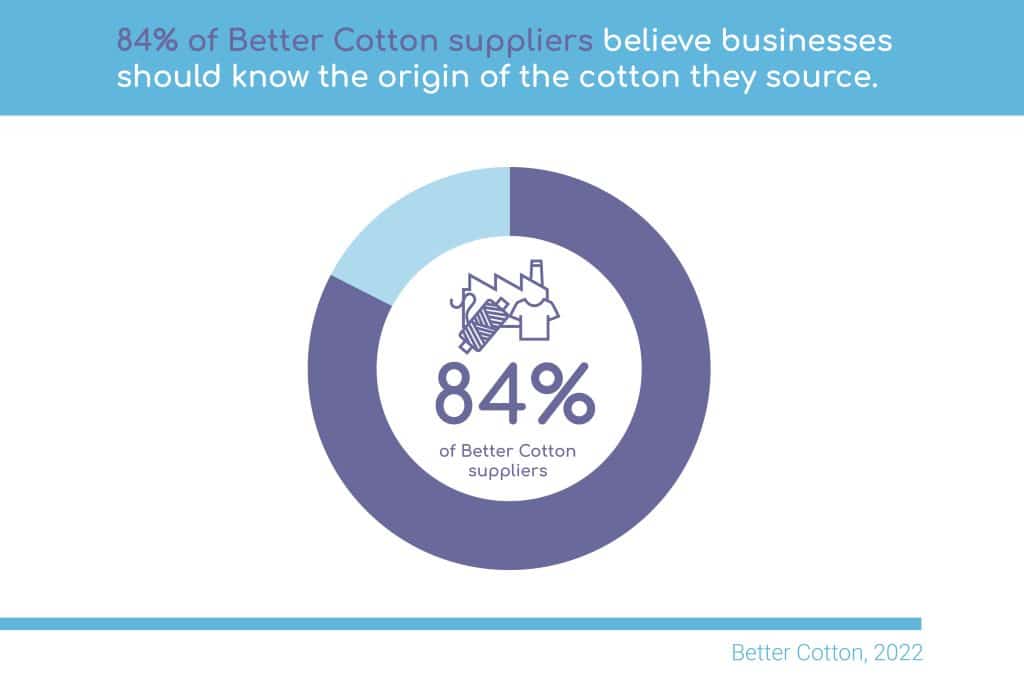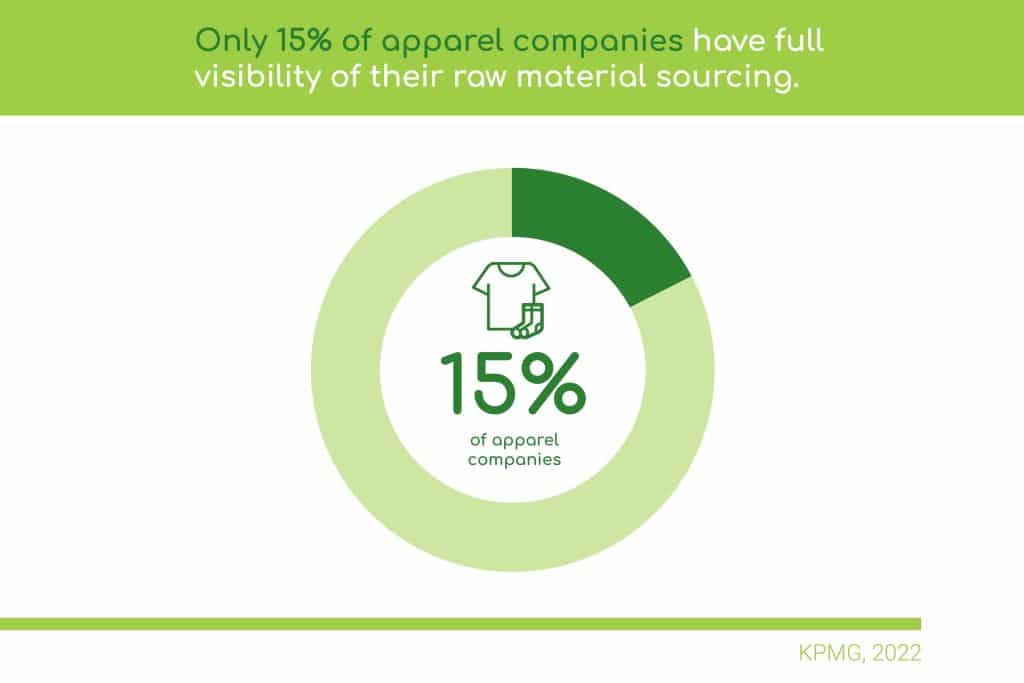By Alia Malik, Senior director, Data and Traceability, Better Cotton. This post was originally shared by World Economic Forum on 12 April 2022. Read the original post.
Ask a fashion retailer where the cotton in their clothes comes from and most throw up their hands: they simply don’t know. ‘We buy through sourcing agents’; ‘Cotton fibres get blended’; ‘The mechanisms for tracking back to individual farms simply don’t exist.’
The reasons they give for not knowing are legion, and, in most cases, perfectly genuine. Along with ubiquitous products like crude oil, soybeans and wheat, cotton is one of the most extensively traded commodities in the world. As with these other high-volume raw materials, it is shipped in bulk, processed in bulk, and sold in bulk.
What is traceability and why is it a growing issue?
Shoppers care about the provenance of their clothes, and they are acting with their wallets. Just look at the rising sales of organic-labelled cotton. The fact that this is the only segment of the market that remains physically separated once the cotton leaves the farm, and is consequently traceable (albeit with some question marks), is no coincidence.
Legislators are also beginning to wake up. The European Commission, for instance, is currently considering a far-reaching proposal that would require corporations to dramatically tighten due diligence requirements in their supply chains. In a similar vein, customs authorities in the United States are now putting more stringent transparency conditions on cotton imports from high-risks countries.

Why doesn’t the cotton sector open up about the origin of its products?
This is a question that retailers and other key actors in the industry are themselves asking. The vast majority in the cotton industry now accept that traceability is no longer a ‘nice-to-have’. Our recent survey of suppliers in the Better Cotton network found that more than 8 out of 10 (84%) see data about the origin of the cotton they purchase as a ‘business need-to-know’. And yet, at present only around 15% of apparel companies claim to have full information about the raw materials that go into their products, according to recent research by KPMG.
The sticking point is the way the market works. To reduce costs and drive efficiencies, the output of individual cotton farmers is consolidated with the output of other farmers almost as soon as it leaves the farm gate. It is not impossible to keep it segregated or to use emerging technologies to digitally mark raw cotton, but the time and costs of doing so are considerable.
Cotton doesn’t go straight from the farm to the retailer, either. There are multiple intermediary actors, from ginners, traders, and yarn spinners through to the fabric mills, garment manufacturers, and, eventually, the brands themselves. Again, introducing checks and controls at every stage may be doable, but it is costly and technically challenging.
Finally, there are legitimate questions about intellectual property to consider. Yarn and fabric producers will often draw on multiple different types of cotton to get the specific blend they are looking for. The net result is that the cotton in a garment most is likely to come from many farms, feasibly from multiple countries.




What is being done to address these challenges?
It is possible for us to address these challenges, although no-one is pretending they are easy. But nor are they insurmountable, especially given the speed of technological innovation in this space. Hence our decision at Better Cotton to bring together a group of leading industry players to consider what a workable traceability solution might look like – and how we can go about collectively creating it.
The group, which includes retailers and brands such as Bestseller, Marks & Spencer and Zalando, are looking at each stage of the procurement process, from existing chain of custody systems through to emerging methods for managing and sharing data about product origins.
A root-and-branch rethink of this kind takes time. In some instances, the potential disruptions will price many retailers out of the market. In other instances, the technological solutions aren’t yet ready to use at scale. In some cases the actors aren’t ready for change.
All these issues aside, there’s the question of physical segregation to consider. At present, Better Cotton promotes a volume tracking system akin to the green energy market. It allows retailers and brands to buy credits that guarantee licensed farmers benefit, and that the equivalent amount of Better Cotton is pulled into the supply chain, but doesn’t necessarily mean that the specific cotton they purchase comes from farms that participate in the Better Cotton programme.
To meet the level of traceability that both customers and regulators are beginning to demand, it may well be necessary to introduce mechanisms for keeping cotton from licensed farms physically separate. This will add rigidity to trading, as well as reduce opportunities for mixing and blending.
Our top priority, therefore, is to find ways to make this work in a way that delivers what consumers want (in terms of traceability) and what farmers need (in terms of a well-functioning market).
Fortunately, we are not starting from square one. Better Cotton is already tracing cotton from the farm to gin and can build on a wealth of trading and processing information already flowing through our exiting better cotton platform.
What impact could this have?
Consumer confidence is the big win from a cotton supply chain in which raw materials can be traced with ease and accuracy. With origin data in hand, the nearly 300 brands that currently source through Better Cotton can also speak with extra credibility about their sustainability efforts. But farmers are also set to benefit. A robust, accessible traceability system will enable those producers who are following Better Cotton standards to enter international value chains that are becoming increasingly regulated. They might risk being left behind otherwise.
Better information about individual farmers will also make it possible to better reward farmers for improving the sustainability of their farms through opportunities such as preferential financing, premiums, and other tailored forms of support. Linking Better Cotton farmers to international carbon-credit markets – in recognition of their 19% lower emission rate as indicated in a recent study across China, India, Pakistan and Tajikistan – is a case in point.
Much remains to be done, but the wheels of change are turning. We plan to begin a series of pilots in key markets this year, with a view to a full roll-out of an enhanced traceability system at the end of next year. Traceability isn’t going away. In fact, the demands for transparency throughout the cotton supply chain are only going to get tougher. We don’t have all the answers right now, but we will. Not knowing is no longer an option.
Better Cotton Members can register to join our upcoming traceability webinar series, kicking off on 8 June. Register here.







































